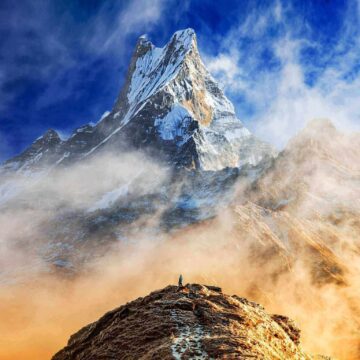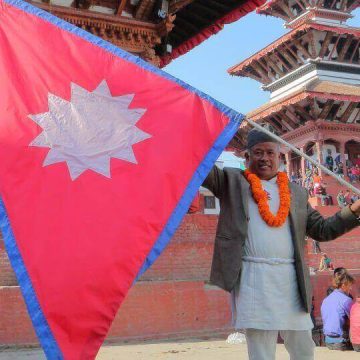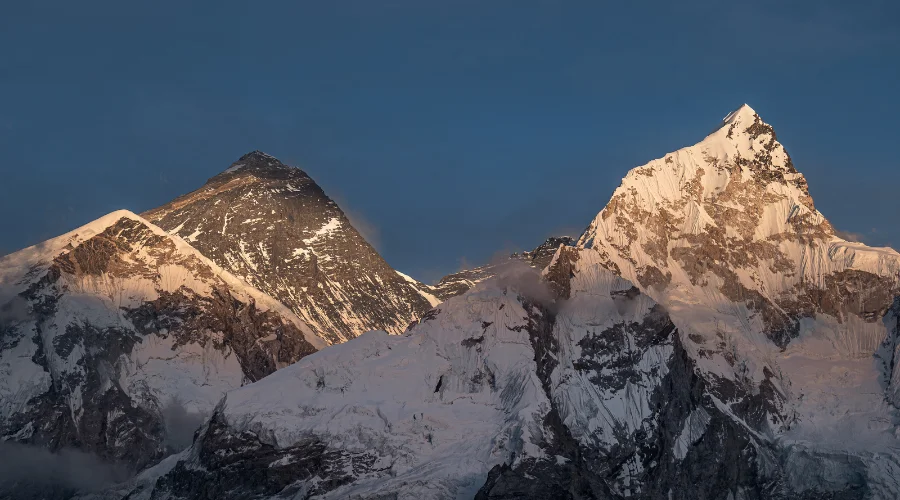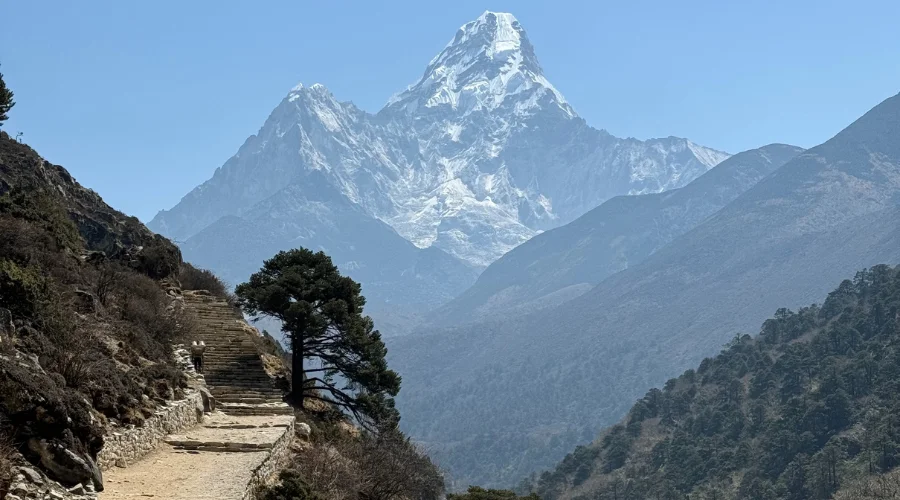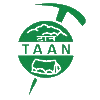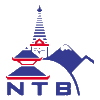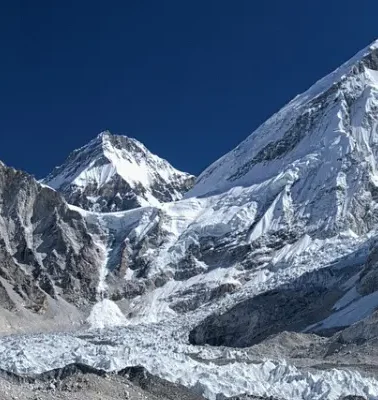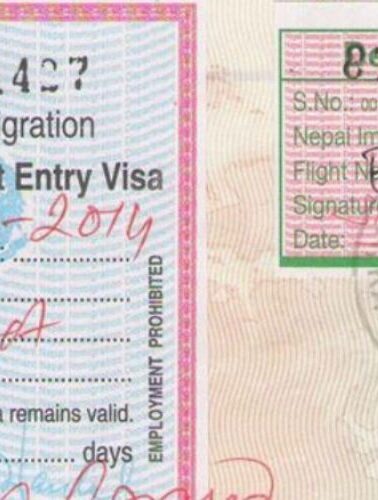
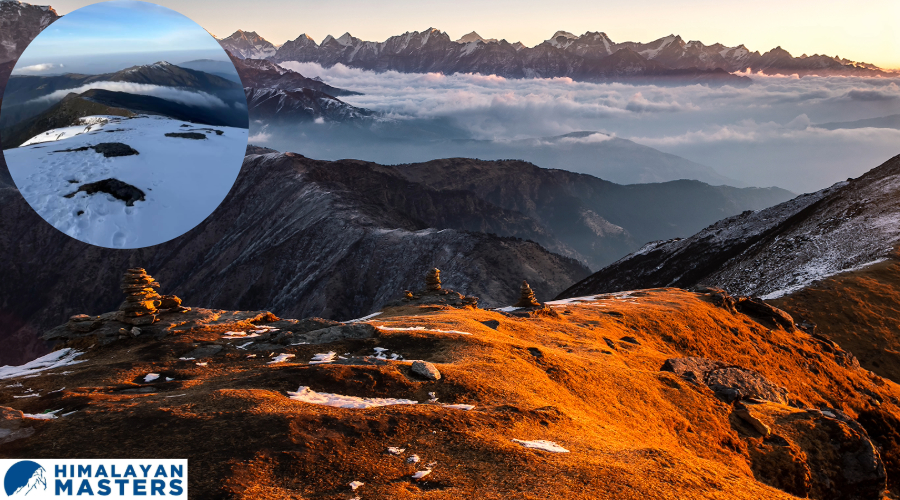
- TRIP DURATION
- 6 Days
- MAX. ALTITUDE
- 4065 m (13,336 ft.)
- TRIP GRADE
- Easy
- LODGING
- Tea House
- BEST SEASON
- Spring and Autumn
- MEALS
- Breakfast, Lunch and Dinner
- COMMUNICATION
- Wi-Fi/ Local SIM Card
- PER DAY WALK
- 5-6 Hours
Pikey Peak Trek
The Pikey Peak trek route is one of the easiest treks in Nepal, located at the lap of the mighty Himalayas, Solukhumbu. Pikey Peak reaches an elevation of 4065 meters (13,336 ft.). The peak provides stunning views of the mountains, along with traditional villages and lush rhododendron forests.
The word Pikey is derived from the local Sherpa language, where Pikey meaning to “Deity of the sky”. Therefore, Pikey Peak holds a sacred significance among the local Sherpa community, along with its scenic beauty.
Trek Overview
The Pikey Peak location in Nepal offers stunning panoramic views of the Himalayas, including Mount Everest and many other highest mountains of the world that are over 8000 meters high.
Pikey Peak trekking is a newly opened, lesser-known, and short trekking route where trekkers can experience its cultural richness and breathtaking views from Pikey Peak.
This trek caters to those seeking the best vantage point for viewing the Mount Everest region and immersing themselves in the local environment and cultures. But have the problem of altitude sickness and are afraid of flights or cannot afford to fly.
Where is Pikey Peak Located?
Pikey Peak Location is one of the best features of the trek. It is located in the Solukhumbu district of eastern Nepal, in the lower Everest region. The Peak is a part of the Mahalangur Himalayan range, towards the south of several popular Everest trekking routes, such as Everest Base Camp.
Trek Facts
Duration of the trek: 6 days
Beginning/Ending Point: Kathmandu (1400 m)
Trek Beginning Point: Dhap Village (2932 m)
Trek Ending Point: Junbesi Village (2700 m)
Drive Distance: 497 km/ 308.8 miles (Kathmandu to Dhap Village & Phaplu to Kathmandu)
Trek Distance: 54 km (33.55 miles)
Total Distance: 551 km (342.4 miles) (Including Drive)
Maximum Elevation: 4065 meters at Pikey Peak
Best Season to Visit: Autumn (September-November) and Spring (March, April, May)
Accommodation: Teahouse/ Guest house/ Hotel
Transportation: Private Jeep/ Public bus/ Flight
Trek Category: Easy
Permits: Sagarmatha National Park Area Entry Permit, Gaurishankar Conservation Area Permit, Local Area Permit
Cost: $600 per person
Pikey Peak Trek Highlights
- Easiest trek in Nepal, which can be completed in a short time.
- The flexibility of reaching the trek location can be started from Jiri, Phaplu, or from Kathmandu.
- View of mountains with height over 8000 meters from the same location, including Mount Everest.
- Trek through beautiful rhododendron and pine forests and a friendly Sherpa village.
- It is a less crowded trekking route with great adventure.
- View of breathtaking sunrise and sunset over the snow-capped mountains.
- Possibility of an alternative trek to Dudhkunda.
- Serene landscape with sacred values of Dudhkunda.
- Experiencing authentic Nepali hospitality in a local tea house.
- Visit the historical Thupten Choling Monastery.
Himalaya/Mountains View from Pikey Peak
- Mount Everest: 8,848.86 meters (29,031.7 feet)
- Kanchenjunga: 8,586 meters (28,169 feet)
- Lhotse: 8,516 meters (27,939 feet)
- Makalu: 8,481 meters (27,825 feet)
- Cho Oyu: 8,188 meters (26,864 feet)
- Manaslu: 8,167 meters (26,795 feet)
- Dhaulagiri: 8,167 meters (26,795 feet)
- Annapurna I: 8,091 meters (26,545 feet)
- Shishapangma: 8,013 meters (26,289 feet)
A Typical Day in Pikey Peak
Like every other trek, in the Pikey Peak trek, you wake up with the rooster’s crow. The trek starts with a steaming cup of tea, probably yak butter tea. Stepping just outside your cozy teahouse rooms, you are greeted with a breathtaking panoramic view of snow-capped eight-thousanders coloured with the golden rising sun.

After having breakfast at around 7-8 am, your trek guide will guide you through the trek. Prayer flags, a clear blue sky, a calming breeze, and a coloured forest with vibrant rhododendrons can be seen along the way.
After walking for a few hours, you will stop for lunch. You can request to stop at some point, or your guide will stop at a teahouse from where you can enjoy the majestic view of the world’s highest peaks.
Perhaps you can have traditional Dal, Bhat and curry. Here, you can share your trekking experience with fellow trekkers or might even take a power nap. After that, the trek again resumes.
After that, you will walk for a couple of more hours; you will arrive at your destination for the night in one of the other teahouses at around 3-5 pm. Here, you will be welcomed with the warmth of burning wood and a delicious dinner prepared from homegrown fresh ingredients.
Muscles tired but spirits high, another Pikey Peak Day comes to an end.
Important Notes for Pikey Peak
- Be aware of early signs of altitude sickness, ascend gradually and acclimatize properly, stay hydrated, and listen to the instructions from the guide.
- Only carry essential clothes and essentials; a porter can carry up to 26 kg, but lesser weight is better for a porter.
- Respect local culture, tradition, religion, and nature; be careful of what kind of dress you wear.
- There are no ATM services on the route, so carry enough Nepali cash.
- Remember to carry the required documents and permits.
- The trek is not just about reaching the summit but also about experiencing it throughout the journey.
Benefits of Booking with Himalayan Masters
Himalayan Masters Adventure and Travel Company is one of the best trekking companies. Our team is comprised of highly skilled and experienced guides and porters. Our primary motive is to provide the most secure, comfortable, and memorable trekking journey at the most affordable price.
Himalayan Masters not only provide help before and during the trek but also after the journey. We build not the customer but a family.
Pikey Peak Trek Itinerary Outline from Kathmandu
| Day | Itinerary | Altitude Gain | Distance | Time |
| 1 | Drive from Kathmandu to Dhap Village | 2932 m | 230 km/ 143 miles | 8 hrs |
| 2 | Trek from Dhap Village to Jhapre | 2920 m | 11.1 km/ 6.9 miles | 6 hrs |
| 3 | Trek from Jhapre to Pikey Peak Base Camp | 3640 m | 13.7 km/ 8.5 miles | 6-7 hrs |
| 4 | Trek to Pikey Peak & Descend to Jasmane | 3530 m | 5 km/ 3.1 miles | 5-6 hrs |
| 5 | Trek from Jasmane to Junbesi Village | 2700 m | 11 km/ 6.8 miles | 6 hrs |
| 6 | Trek to Phaplu & Drive to Kathmandu | 2413 m | 280 km/ 170 miles | 13 hrs |
ITINERARY
Day 01: Drive from Kathmandu to Dhap Village
Drive Route: Kathmandu → Dhulikhel → Khurkot → Ghurmi → Dhap Village
Beginning Point: Kathmandu (1400 m)
Ending Point: Dhap Village (2900 m)
Lunch: On the way
Kathmandu to Dhap Drive Distance: 230 km/ 142.9 miles
Total Ascent: 1500 meters
Overnight: Dhap Village
One of the trekking guides of Himalayan Masters will be accompanying the trekkers from Kathmandu for the Pikey Peak trek. We will take a public vehicle from Machhapokhari, Kathmandu, or you can hire a private shared jeep. After driving for approximately 8 hours, we can reach Dhap village from Kathmandu.
On the way, we will pass through Dhulikhel and travel on the BP Highway (Banepa Bardibas Highway) via Khurkot and Ghurmi. From Khurkot, we will turn left and drive 100 km to Okhaldhunga, from where Dhap is just 20 km away.
With the refreshing scenery and, a few snake-like curves, and bumpy roads, stopping for rest and lunch, we will arrive at Dhap Village (2900 meters/9350 feet).
You will be staying in one of the best teahouses in Dhap, where they will provide warm and comfortable accommodation and fresh and healthy meals.
Meal : Breakfast, Lunch and Dinner
Accommodation : Tea House
Walking / Driving : 8 hours driving
Day 02: Trek from Dhap Village to Jhapre
Trek Route: Dhap → Singane → Phokte Danda → Jhapre
Beginning Point: Dhap Village (2900 meters)
Ending Point: Jhapre (2920 meters)
Lunch: Singane
Dhap to Jhapre Trek Distance: 11.1 km (6.9 miles)
Total Ascent: 20 meters (65.6 ft.)
Overnight: Jhapre
On the 2nd day of the Pikey Peak trek, the trekkers will start their trek from Dhap to Jhapre (2920 meters/9580 feet). After having a delicious breakfast in the teahouse in Dhap, we will follow a gradual uphill route to Jhapre to stay overnight there.
The first village you will encounter is Singane. Singane is around 6 km away from Dhap Village, where you can have your lunch and take a rest for some time.
With a refreshing lunch, we need to trek for an additional 2-3 hours to reach Jhapre Phokte Danda. From there, we can view Mount Everest and many other mountains like Numbur from a panoramic view. During the trek, we will pass through charming villages and colourful gompas (Buddhist monasteries).
The 2nd day’s trek is going to be a total of 5-6 hours trek.
Meal : Breakfast, Lunch and Dinner
Accommodation : Tea House
Walking / Driving : 5 to 6 hours trekking
Day 03: Trek from Jhapre to Pikey Peak Base Camp
Trek Route: Jhapre → Bhulbhule → Lamjura Danda → Pikey Peak Base Camp
Beginning Point: Jhapre (2920 meters)
Ending Point: Pikey Peak Base Camp (3640 meters)
Lunch: Lamjura Danda
Jhapre to Pikey Peak Base Camp Distance: 13.7 km (8.5 miles)
Total Ascent: 720 meters (2362 ft.)
Overnight: Pikey Peak Base Camp
Now, it is the 3rd day of the trek to Pikey Peak base camp (3640 meters/11942 feet). The trek route follows a sloppy uphill route on the Pikey Peak trekking trail that leads us to Pikey Peak Base Camp.
The trail goes through meadows and ridgelines, offering excellent views of mountain peaks along the mani stone wall, Buddhist monasteries, and small cheese factories.
The trek then takes the route below Tapting Danda through the lush rhododendron forest. Then, you will stop at Bhulbhule, where you can have some tea, coffee, and snacks.
After trekking for a couple of hours, we will then be at Lamjura Danda for lunch. Here, you can rest and have a delicious lunch. From here, the trek follows a little difficult trail via a rhododendron forest.
With an additional 3-4 hours trek, you can reach Pikey Base Camp, where you will spend the night. Remember to order breakfast for tomorrow, and enjoy a cozy bed and dinner in a teahouse in Pikey Peak Base Camp.
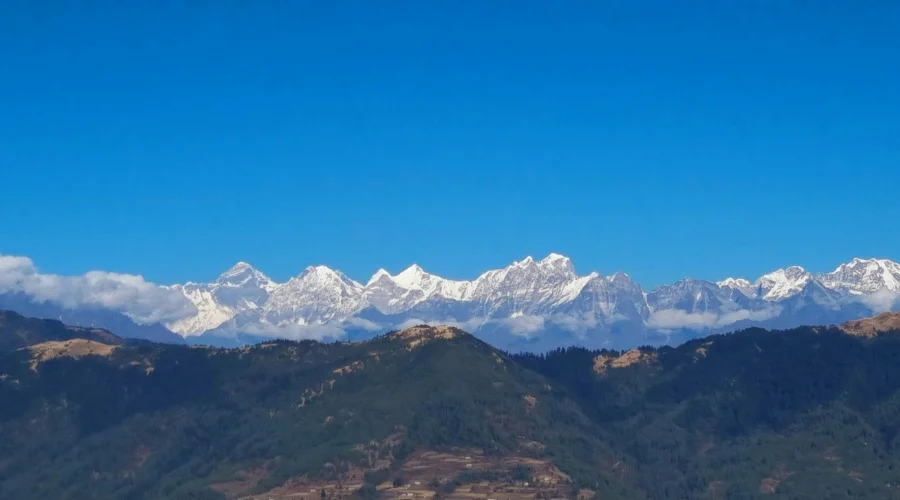
Meal : Breakfast, Lunch and Dinner
Accommodation : Tea House
Walking / Driving : 6-7 hours trekking
Day 04: Trek to Pikey Peak & Descend to Jasmane
Trek Route: Pikey Peak Base Camp → Pikey Peak → Jasmane Bhanjyang
Beginning Point: Pikey Peak Base Camp (3640 meters)
Ending Point: Jasmane Bhanjyang (3530 meters)
Lunch: Jasmane Bhanjyang or packed lunch
Trek Distance: 5 km (3.1 miles)
Maximum Elevation: 4065 m (13,336 ft.) at Pikey Peak
Total Ascent: 425 meters (1394 ft.) from Pikey Peak Base Camp to Pikey Peak
Total Descent: 535 meters (1755 ft.) from Pikey Peak to Lamjura Danda
Overnight: Jasmane Bhanjyang
On the 4th day, we will start our hike to Pikey Peak early in the morning to witness an awe-inspiring sunrise view. The sun painting the mountains with orange paint is a view you will cherish for a lifetime.
After soaking in the serene view and some breakfast, we will head towards our 5th day’s destination, Jasmane Bhanjyang. The trek from the Pikey Peak Goli is just a 3-4 hours trek, so we will have our lunch once we reach Jasmane Bhanjyang.
The trek route on this day is challenging as the trek route follows rocky landscapes through the dense and vibrant rhododendron forest. Despite the challenge, this part of the trek combines the thrill of high-altitude adventure with the warm hospitality of the local tea house.
The total trekking distance for the day is approximately 5 km, which takes around 5-6 hours.
Meal : Breakfast, Lunch and Dinner
Accommodation : Tea House
Walking / Driving : 5-6 hours trekking
Day 05: Trek from Jasmane to Junbesi Village
Trek Route: Jasmane Bhanjyang → Taktor → Junbesi Village
Beginning Point: Jasmane Bhanjyang (3530 meters)
Ending Point: Junbesi Village (2700 meters)
Lunch: Taktor
Jasmane to Junbesi Trek Distance: 11 km (6.8 miles)
Total descent: 830 meters (2723 ft.)
Overnight: Junbesi Village
Our 5th day’s trek route is an interesting route. The trek route crosses with Everest Base Camp Trek from Jiri at Junbesi Village.
We will start our trek to Junbesi Village via Taktor, which is a total of 5-6 hours of trek, covering about 11 km.
After having a satiating breakfast at the teahouse in Jasmane Bhanjyang, we will start descending to Junebesi Village, a charming Sherpa village. Junbesi is home to the Thubten Chholing Monastery, where trekkers can witness Buddhist rituals and interact with monks.
The trek route meanders through the jungle route up to Taktor Village. You will be having lunch at Taktor for today. Also, you can visit the Taktor monastery while your lunch is being prepared.
Thereafter, we will continue our trek to Junbesi for 1 or 2 hours. Finally, after reaching Junbesi, you can enjoy the warm hospitality of a teahouse, where you can take a rest and savour a delicious meal.
Meal : Breakfast, Lunch and Dinner
Accommodation : Tea House
Walking / Driving : 5-6 hours trekking
Day 06: Trek to Phaplu & Drive to Kathmandu
Trek Route: Junbesi → Benighat → Phaplu
Drive Route: Phaplu → Kathmandu
Trek Beginning Point: Junbesi Village (2700 meters)
Trek Ending Point: Phaplu (2413 meters)
Drive Beginning Point: Phaplu
Drive Ending Point: Kathmandu (1400 meters)
Lunch: Phaplu
Junbesi to Phaplu Trek Distance: 13.26 km (8.2 miles)
Phaplu to Kathmandu Distance: 267 km (165.9 miles)
Total Descent: 1300 meters (4265 ft) from Junbesi to Kathmandu
Overnight: Kathmandu
Today marks the final day of our trek! We’ll be trekking for 5-6 hours, following the Junbesi Khola until we reach a sturdy steel suspension bridge. Once we cross the bridge, we’ll arrive at Beni Ghat and continue to Phalpu, our trek’s final destination.
In Phalpu, you will be having the last lunch of Pikey Peak Trek Goli. After lunch, our jeep will be waiting to take us back to Kathmandu – an approximately 8-9 hours drive.
Meal : Breakfast and Lunch
Accommodation : Hotel
Walking / Driving : 5-6 hours trekking and 8 hours driving
include / exclude
Trip Cost Includes
- Pick-up and drop-off service from the TIA Airport.
- 2-night accommodation in Kathmandu.
- Meals and accommodation during the trek.
- English-speaking, experienced, and licensed trek guide by the Himalayan Masters.
- Transportation from Kathmandu to Dhap and Phalpu to Kathmandu.
- National Park and other local permits, if required.
- Trekking equipment, if required (refundable).
- Trekking map, t-shirt, and other accessories.
- Water purification tablets.
- Miscellaneous official expenses and governmental TAX and VAT.
Trip Cost Excludes
- International flight ticket.
- Visa Charges.
- Extra hotel expenses (some packages include hotel expenses within Kathmandu).
- Travel and Medical insurance.
- Personal expenses such as shopping, souvenirs, bar bills, telephone, laundry, Wi-Fi, etc.
- Water purifying bottles.
- Services are not mentioned or are not promised by the agent/agency.
- Emergency services such as chartered helicopters.
- Tips for trek guide and porter.
useful info
Pikey Peak Weather
The Pikey Peak weather changes significantly depending on the season. Spring (March-May) has a temperate climate with temperatures ranging from 10°C to 20°C during the daytime, offering clear skies and blooming rhododendron views.
Likewise, Autumn (September-November) has a pleasing and calming environment with a festive vibe. This season offers cool and crisp air, making it one of the ideal seasons for trekking.
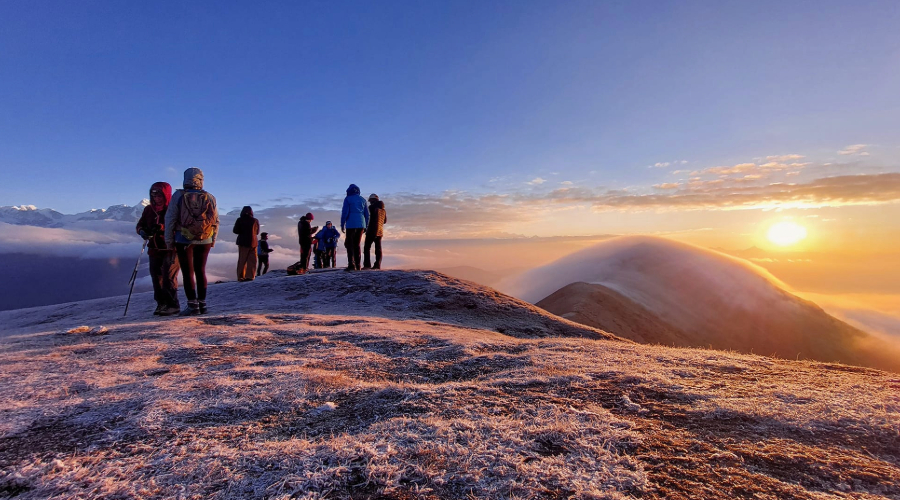
In contrast, Pikey Peak in winter can be really cold, with temperatures dropping to below -5°C at higher altitudes at night. Trekking Pikey Peak in winter is comparatively challenging due to snow covering the trekking trail.
Similarly, Pikey Peak Nepal, in Monsoon (June-August) season, receives heavy rain, making the trail muddy and slippery, increasing the challenges in trekking. Additionally, the temperature during this season can vary between 15°C and 20°C.
Pikey Peak Trek Difficulty
The Pikey Peak trek is a comparatively easy trekking route than Manaslu Tsum Valley Trek, Annapurna Base Camp Trek, and Everest Three Passes Trek. The trek route traverses via the lower region of Everest.
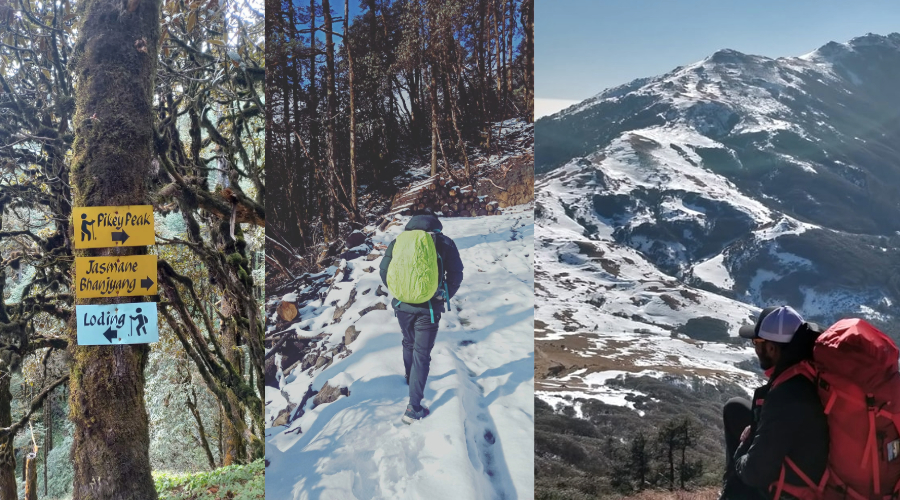
Although it is a short and easy trek, accidents can happen anytime, anywhere. You need to be prepared in case of any accidents or emergencies on the trek. Altitude sickness, loss of breath, appetite, sleep, hypothermia, sore throat, etc., are some of the challenges that you might encounter during the trek.
Having said that, it is a perfect trekking destination for novice trekkers and for those with ordinary fitness levels.
Best Season to do Pikey Peak Nepal
The Pikey Peak weather showcases its beauty around the year, but spring (March-May) and autumn (September-November) are considered the best time for the Pikey Peak trekking.

Pikey Peak on Spring
During the spring, the lower Everest region is filled with vibrant rhododendron colours. Pleasant Pikey Peak weather conditions, temperature, and clear skies with magnificent views of the Himalayas, sunrise, and sunset proves to be ideal season for trekking.
Pikey Peak on Autumn
The Pikey Peak in autumn showcases itself as calming, festive environment. The days are moderately calm, and the skies are clear, offering great scenery and cultural immersion. You can even enjoy the festivals with the local communities on the trek.
Pikey Peak on Winter
For those seeking more adventure, winter could be a favourite season for trekking for them. During the winter, Pikey Peak offers a contrasting landscape. The days are normally clear and sunny. But at the altitudes of Pikey Peak, it could be significantly colder with unpredictable weather conditions.
Pikey Peak on Summer/Monsoon
Summer/monsoon is typically challenging due to rain. Walking on the slippery and muddy road because of rain makes navigating difficult. Also, the insect bites and leeches in lower regions are major challenges when trekking during the summer season. In contrast, during clear weather, mountain views above the clouds or far beyond are awe-inspiring in Pikey Peak Nepal.
Trekking Roads/Routes and How to Avoid
Basically, once you start trekking from Dhap Village until Phaplu while returning, the whole route follows the traditional trek trail. Almost all the trek routes in the Himalayas follow the trekking trail. To promote trekking culture, you will not find motorable ways, especially in the Everest region.
However, up to Dhap Village from Kathmandu and Phaplu to Kathmandu, you will need to drive. For a better and more isolated trekking experience, you can hire a local guide who knows the lesser-popular trek routes.
Is Special Training Needed?
You do not require any special training for the Pikey Peak Trekking. Prior experience in hiking or trekking could be a plus point, though. To ensure smooth and enjoyable trekking memories, regular exercise is highly recommended for boosting cardiovascular endurance.
Engaging in activities like hiking, biking, and swimming can significantly improve your endurance. In addition, you need to be mentally as well as physically sound to make the most out of the trek.
When it comes to trekking or travelling, being physically and mentally fit is recommended. To need to walk for 5-6 days (as the Pikey Peak trek itinerary is of 6 days) for 6 hours on a moderate sloppy trail every day. For that, being physically fit will surely make your trip exciting.
Also, if you have any medical issues or allergies, it is highly advised that you consult with your doctor beforehand. Additionally, mention them to your guide before starting the trek so that he/she can plan accordingly.
Altitude Sickness During Trekking!
Pikey Peak altitude reaches a maximum elevation of 4,065 meters at Pikey Peak Base Camp. Trekkers can face altitude sickness above the elevation of 2,500 meters. So, it is better to be well aware of one’s health condition and early symptoms of altitude sickness to avoid any severe conditions.
Therefore, it is advised to ascend gradually, get acclimatized to the Pikey Peak height level and stay hydrated. If you feel any difficulty, you should inform your guide to avoid any hazardous incidents. Also, be prepared for any emergency evacuations.
Emergency and Evacuation
Emergency and evacuation while Pikey Peak trekking is not essentially required as the trekking route is considered a relatively safe route. However, it is better to be safe than sorry during any emergencies. With the experienced guides and their proper evacuation strategies, you are basically in safe hands with Himalayan masters.
Insurance for Pikey Peak Trek Nepal
Travelling or trekking in the mountains can be unpredictable. Sometimes, some unforeseeable accidents might occur that could cause a huge loss, physically and financially. So, it is better to be well prepared beforehand.
Travel insurance covers a few emergencies like helicopter evacuation costs (might cost around USD 1000, more or less) or medical care, ensuring one’s safety. Choose your travel insurance provider carefully.
Permits for Pikey Peak Nepal
You will require three permits for the Pikey Peak Trek; they are Sagarmatha National Park Area entry permit, Gaurishankar Conservation Area Permit and a Local Area Permit.
The Sagarmatha National Park Area Permit and Gaurishankar Conservation Area permit will cost you $30 per person, and the Local Area permit will cost you $17 per person.
Sagarmatha National Park entry permit allows the trekkers access to the protected area where Pikey Peak resides.
Additionally, a Gaurishankar Conservation Area Permit (GCAP) is necessary as the trek’s route passes through the Gaurishankar Conservation Area.
Similarly, a Local Area Permit is also required, which can be obtained locally to complete the necessary authorizations for your Pikey Peak adventure.
Trek Cost
The trek cost might fluctuate depending on the time of the year you are trekking and your budget. But with Himalayan Masters, you will be covered at around $600 per person for the Pikey Peak Trek.
The trek cost covers all your food and accommodation during the Pikey trek, travel costs including Pikey Peak permit, guide, and porter costs required for the trek.
The overall Pikey Peak cost breakdown is given below for your reference:
Food: The food, including breakfast, lunch, and dinner, will cost around 15-20 dollars per day.
Accommodation: Accommodation costs around $5-$7 per day as per the altitude.
Guide and porter: Each day, the cost for a guide and porter will cost you around $25-$30 and $20-$25, respectively.
Transportation cost: The transportation will cost you around $50-80 dollars in public vehicles. But Himalayan masters will organize a private vehicle for you.
Permits Cost: As you will need three permits for the Pikey Peak Trek, the cost will be $30 for Sagarmatha National Park Entry Permit and Gaurishankar Conservation Area Permit, and for the local Area permit will cost you $17, i.e. NPR 2000 per person.
Is Additional Cost Needed?
Although all the expenses are included in the trip package, you will need to carry extra cash for miscellaneous.
You will need to pay an additional charge for snacks and extra cold, hot, and alcoholic drinks. Also, you might be charged additional charges for hot water and shower, Wi-Fi, and electronic charging. Additionally, if you take a private jeep, except included in the trip package, you will need to pay extra for it.
Further, if the trekkers have extra luggage or want to share their load so that he/she can trek more comfortably, they can hire an additional porter. Each porter carries 20-25 kgs of weight.
Altogether, you can expect to spend around $15-$20 per day.
Private Transportation
You can also opt for a shared private jeep service for an additional charge on top of the standard trek cost. This private jeep will pick you up directly from your Kathmandu hotel at 7:00 am and transport you comfortably to Dhap and from Phaplu to Kathmandu. Shared jeeps typically accommodate up to 7 passengers.
Kathmandu to Dhap: USD 250 (one way)
Phaplu to Kathmandu: USD 250 (one way)
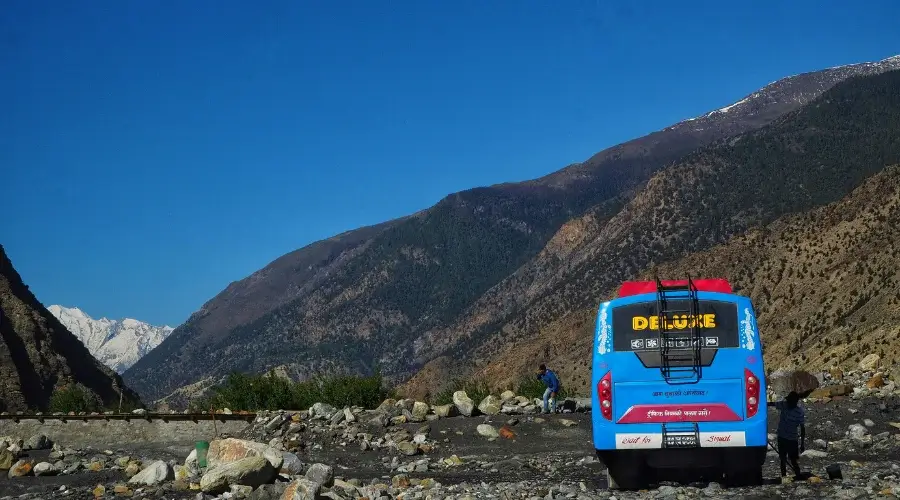
Pros of Private Vehicle
- It is cleaner and more comfortable than public transportation.
- It takes a shorter time to reach the destination.
- You can stop at cleaner restaurants for meals between the drive.
- Alternative sightseeing can be done on the way.
NOTE: If you are prone to any health issues during the trip, it is better to take a private vehicle.
Cons of Private Vehicle
- Increased Cost:
Taking a private vehicle will likely increase your overall trek budget due to the additional expense compared to public transport. - Limited Social Interaction:
Public transport offers a chance to connect with fellow trekkers and locals, enriching your travel experience. A private vehicle limits these interactions, potentially making the journey feel more isolated. - Road condition:
Sometimes, it is better to take a public vehicle considering the road condition, as private drivers might not be quite familiar with the road condition.
NOTE: If you are a solo traveller, it is better to take a public vehicle.
Packing List for Pikey Peak Trekking
The kit and equipment required for the Pikey Peak Trek are:
- Sturdy hiking boots with ankle support
- Warm and breathable clothing
- Trekking Poles
- Down jacket for minus degrees Celsius
- A warm fleece jacket
- Rain gear
- Sleeping Bag
- Trekking Backpack
- Small bag as a daypack
- A first-aid kit
- Official documents and permits
NOTE: There is no hard and fast rule for packing lists for Pikey Peak trekking. However, carrying proper clothing and trekking gear is highly suggested for a safe and comfortable trekking experience.
Accommodation on Trekking
The Pikey Peak trek route is a comparably lesser-known route than the Everest Base Camp trek and Manaslu Circuit Trek or any other trek in the lower Everest region trek. Since the trekking route is not so popular, the only available accommodations are either teahouses or a few small lodges.
These aren’t any basic campsites or luxury hotels; they provide basic two-bed bedrooms with blankets and pillows. Few of them might have hot showers and even attached bathrooms. Hot water, Wi-Fi, electronics charging, and other additional expenses like drinks and alcohol come with additional charges.
It can be an amazing opportunity to connect with residents and their culture and experience firsthand the warmth and hospitality of the Nepali people.
Food on Trekking to Pikey Peak
Due to the remoteness of the trek’s route, processed and pre-packed food is not readily available. This gives the trekkers a chance to savour the traditional taste of Nepali food.
Teahouses here offer both vegetarian and non-vegetarian food’s menu featuring fresh, locally-grown vegetables – all organic and free of pesticides.
Dal Bhat, a lentil soup with rice and curries, provides delicious and nutritious fuel for the trek, from which a famous saying came: “Dal Bhat power 24 hour”.
Breakfast
Oatmeal, Tibetan bread, Chapati and paratha, Potato items, Muesli, Pancake, Porridge, Chocolate, Egg items, etc.
Lunch
Dal Bhat and curry, Mo: Mo, chowmin, noodle, veg and non-veg soup, pasta and macaroni, pizza, sandwich, spaghetti, etc.
Dinner
Dal Bhat, veg and non-veg curry, soup, chocolate rolls, rice pudding, thukpa, etc.
Packed Lunch
Sandwich, boiled or fried egg, fresh or dried fruits, energy bars, chocolate, nuts, cookies, electrolytes, etc.
Electricity & Battery Recharge Service
Electricity and battery recharge during the Pikey Peak trek map can be scarce. Teahouses and lodges along the trek might offer limited or solar-powered electricity and charging options. So, you are advised to carry a power bank.
Water During Trek Pikey Peak
You need to stay hydrated wherever and whenever you are trekking. Carrying a reusable water bottle and purifying the water before drinking with a water purifying tablet is an essential measure during Khopra Danda trekking.
Using plastic bottles is banned in the mountains, so you need to carry a refillable bottle. You can refill the bottle in a hotel for a dollar. However, the best option is to refill the bottle with the natural tap and use a Steripen (UV sterilizer) for safe drinking water.
NOTE: Himalayan Masters will provide you with a complimentary water purifying tablet for the trek.
Internet/ Wi-Fi Service
Internet connectivity on the Pikey Peak trek route can be hard to find. Teahouses and lodges may offer weak or nonexistent Wi-Fi service. Even cell service may be limited or have no coverage in some places.
Money Changer and ATM During Trek
Pikey Peak trek route is a relatively new trek route located in the lower Everest trek region. It is still developing its infrastructure, and no ATMs are available along the way. The only ATM is located in Phaplu, on the way back to Kathmandu. Or at Kathmandu before starting the trek.
Moreover, every transaction through ATM costs an additional 3.5%, which is not a wise decision. So, it is essential to carry enough Nepali Rupees (NPR) for your trek. You can exchange your money in one of the authorized money exchange booths in Kathmandu.
Communication During Trekking
Mobile network coverage is available in some of the areas of the Pikey Peak trek map. However, it cannot be relied upon in remote sections. For mobile network coverage, you can use a local SIM card (like NTC and NCELL).
Further, teahouses en route Pikey Peak trek offers Wi-Fi facilities, though it might be slow. If you want to be connected at all times, you can use a data package from the local SIM card.
Guide Vs Solo
Though solo trekking in Pikey Prak trek for 6 days is possible, it is better to hire a guide for information regarding the trek route and local culture and history.
Guides can help you navigate and communicate with the locals. Also, they know the people and teahouses on the route, so you need not worry about any of those things.
In contrast, solo trekking offers a sense of solitude and more flexibility. Moreover, if you are trekking solo, you need to be fully prepared and have information regarding the route and accommodation. Maybe you would like to learn a few Nepali phrases for your convenience.
Porter Vs No Porter
Hiring a porter significantly reduces the burden of carrying your heavy luggage, making the trek easier, comfortable, enjoyable, and achievable.
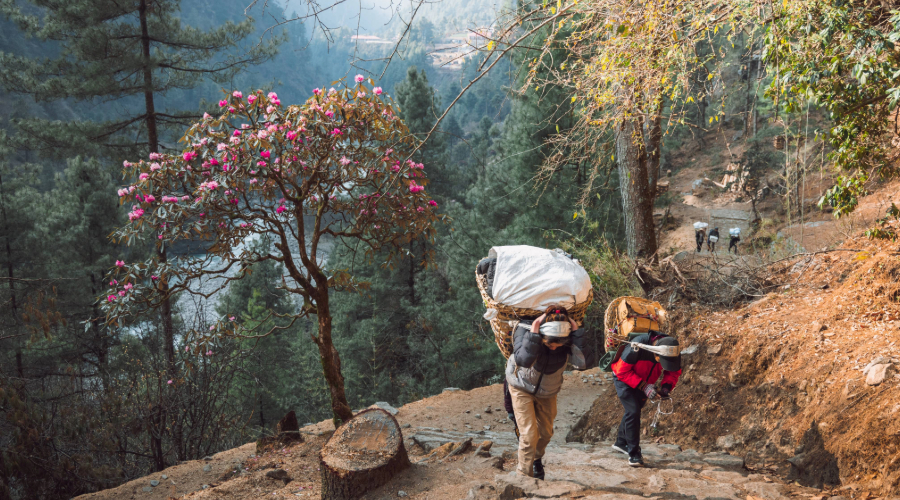
Without a porter, you will need to carry all your luggage by yourself, which reduces your trekking expenditure. However, it increases the physical demand, especially at higher altitudes, and exhaustion.
Tipping Culture on Pikey Peak Trek 6 days
While it is not compulsory to tip your guide and porter. But, out of appreciation, it is expected that you tip them for their dedication and hard work.
Normally, the tip for the guide and porter is 10% of your trip, but you can tip them as you please. More is always appreciated. Remember, the tip you give goes directly to them, so you are not just helping them by tipping but also their family and their economy.
Alternative Pikey Peak Trekking Route
If time is not the problem, we suggest you extend your trek by 3-4 days to witness the beauty and religious importance of Dudhkunda.
Dudhkunda is a jewel of the Solukhumbu region, a small, sacred glacial lake located north of Ringmo in the lap of Mount Numbur. Depending on the Nepali calendar (typically June or July), during the festival month, hundreds of devotees visit Dudhkunda to see its beauty and religious significance.
Just imagine the serene reflection of the majestic Himalayas on the lake, infused with spiritual energy during the festival. It would be an incredibly enriching experience.
The route to Dudhkunda starts from Ringmo. But it is recommended to ask about the latest route and accommodation in the village of Beni with the local teahouse keeper. You will be spending the night before and after trekking to Dudhkunda and the second night in Beni.
On the 6th day of the trek, you can also take the alternative trek to Dudhkunda from Junbesi. Since the route is difficult, mainly during the winter, it is important to take a guide on this route.
Another crucial reason for taking a guide is that they will instruct you to be well prepared in case a hut in Beni closes. In such a scenario, being self-sufficient for up to three extra days with a portable stove and food becomes essential.
The most significant thing to consider about the Dudhkunda trek is the view of Everest on the trail from Ringmo to Dudh Khola Lake. The most significant thing to consider about the Dudhkunda trek is the view of Everest on the trail from Rigmo to Dudh Khola Lake.
Pikey Peak Trek Booking Procedure
The Pikey Peak Trek map can be booked with Himalayan Masters by following a few easy steps below:
- Fill out the online form from our trip page or contact Himalayan Masters via WhatsApp, email, phone call or SMS.
- Then, we will contact you through email with further information. If you have any special requests regarding the trip, you can mention them. The trip can then be customized as per your needs.
- Once you pay $200, your booking will be confirmed.
- Finally, after the full payment for the trip, you are all set to go on a trek.
NOTE: You can ask for a trip briefing and itinerary even before booking the trip.
- Documents for Booking Pikey Peak Trek Nepal
- Emergency contact detail
- A copy of your passport
- A copy of your flight ticket
- Two passport-sized photographs
- A copy of your travel insurance (optional)
Last-minute Booking
Pikey Peak Trek Nepal can be booked at the last minute before the trek by directly contacting us on WhatsApp, email, phone calls, or any other procedure. However, you need to book the trip a day before the trek. Additionally, you will need to make full payment for the trip.
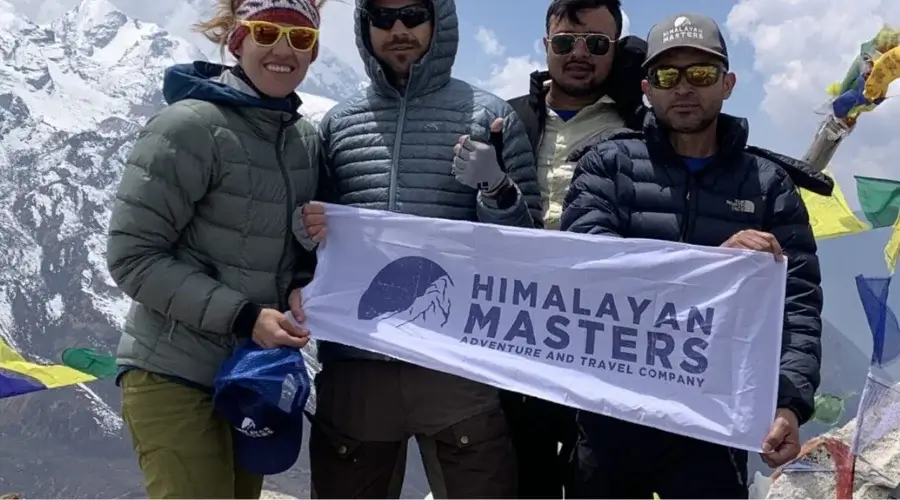
Cancellation and Postpone Policy
Once you make a booking for the trip, the amount you paid is not refundable. However, you can postpone Pikey Peak Trekking in Nepal or any other trek from our company as many times as you want to for your whole life.
Feedback and Review
Please leave a review once you return from the trek, might it be our good or bad service. If there is anything you do not like about it, we will do our best to improve it.
FAQs
Where is Pikey Peak located?
Pikey Peak is located in the Solukhumbu District of Nepal, lower Everest region.
What is the Pikey Peak height?
How difficult is the Pikey Peak trek trail?
What is the best time for the Pikey Peak trek?
What kind of places will I stay in on the Pikey Peak trek?
Do I need any permit for the Pikey Peak trek?
How can I get to the starting point of the trek?
What foods can I get during the Pikey Peak trek?
Do I need guides and porters for the Pikey Peak trek?
What are the main highlights of the Pikey Peak trek?
How common is altitude sickness on this trek?
How long is the Pikey Peak trek itinerary?
Can I have a Pikey Peak trek with my family?
What is the cost of the Pikey Peak trek?
What kind of weather does Pikey Peak have?
Is it suitable to trek during winter?
What should I pack for the Pikey Peak trek?
Do I need to be aware of any health risks?
What should I do in case of an emergency on the trek?
Can I rent trekking gear in Kathmandu?
Can the Pikey Peak trek be customized?
Is the Pikey Peak trek suitable for beginners?
Is Pikey Peak Trekking safe for solo female trekkers?
Why did Nepal ban solo trekking?
Can I do the Pikey Peak trek with my kins/kids/children?
Can I do the Pikey Peak trek with my pets?
Do teahouses serve food suitable for vegetarians or vegans?
What cultural norms should I be aware of while trekking?
Is Pikey Peak jeep tour possible?
What kind of wildlife can I encounter while trekking?
Speak to an Expert





Sandip Dhungana
Nepal 🇳🇵
Whatsapp: +977-9823636377
Speak to an Expert





Sandip Dhungana
Nepal 🇳🇵
Whatsapp: +977-9823636377


